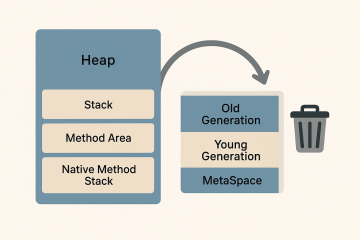As applications scale in complexity and volume, traditional request-response models often fall short in terms of responsiveness, decoupling, and scalability. Event-driven architecture (EDA) has emerged as a powerful paradigm to address these challenges, enabling reactive, resilient, and loosely coupled systems.
In this blog, we will explore how to build event-driven architectures using Spring Boot and Apache Kafka, two of the most widely adopted technologies in modern backend systems. We’ll cover the architectural benefits, practical setup, and implementation examples.
What Is Event-Driven Architecture?
Event-driven architecture is a software design pattern where services communicate by publishing and consuming events rather than calling each other directly.
Key concepts include:
- Event Producers: Components that emit events
- Event Consumers: Components that react to those events
- Event Brokers: Middleware that transports events, e.g., Apache Kafka
This architecture promotes:
- Loose coupling between services
- Asynchronous communication
- Real-time data processing
- Scalability and fault tolerance
Why Apache Kafka?
Apache Kafka is a distributed streaming platform designed for high-throughput, fault-tolerant, real-time data pipelines.
Key features:
- Persistent and durable messaging
- Horizontal scalability
- Built-in replication and fault tolerance
- Supports millions of messages per second
Kafka is well-suited for event-driven systems due to its log-based architecture and robust publish-subscribe model.
📚 Learn more: Apache Kafka Documentation
Spring Boot + Kafka: The Perfect Match
Spring Boot, with its auto-configuration capabilities, simplifies the integration with Kafka via the Spring for Apache Kafka project.
Benefits of using Spring Boot with Kafka:
- Simplified configuration
- Declarative listener setup
- Schema integration via Avro or JSON
- Integration with Spring Cloud for microservices
Setting Up Kafka in a Spring Boot Project
Add Maven Dependencies
xmlCopyEdit<dependency>
<groupId>org.springframework.kafka</groupId>
<artifactId>spring-kafka</artifactId>
</dependency>
Configure Kafka in application.yml
yamlCopyEditspring:
kafka:
bootstrap-servers: localhost:9092
consumer:
group-id: order-service-group
auto-offset-reset: earliest
key-deserializer: org.apache.kafka.common.serialization.StringDeserializer
value-deserializer: org.apache.kafka.common.serialization.StringDeserializer
producer:
key-serializer: org.apache.kafka.common.serialization.StringSerializer
value-serializer: org.apache.kafka.common.serialization.StringSerializer
Create a Kafka Producer
javaCopyEdit@Service
public class OrderProducer {
private final KafkaTemplate<String, String> kafkaTemplate;
public OrderProducer(KafkaTemplate<String, String> kafkaTemplate) {
this.kafkaTemplate = kafkaTemplate;
}
public void sendOrder(String order) {
kafkaTemplate.send("order-topic", order);
}
}
Create a Kafka Consumer
javaCopyEdit@Service
public class OrderConsumer {
@KafkaListener(topics = "order-topic", groupId = "order-service-group")
public void listen(String order) {
System.out.println("Received Order: " + order);
}
}
Real-World Use Case: Order Processing System
Let’s consider a simple event-driven system for an e-commerce platform:
- Order Service emits an
OrderPlacedevent - Inventory Service listens and updates stock
- Payment Service triggers payment processing
- Shipping Service dispatches the order
Using Kafka as the backbone, each service can scale independently and remain loosely coupled.
Handling Failures and Retries
Spring Kafka supports error handling and retry mechanisms:
javaCopyEdit@KafkaListener(topics = "order-topic", errorHandler = "customErrorHandler")
public void consume(String message) {
// business logic
}
Implement custom error handling with backoff and DLQ (Dead Letter Queue) patterns for maximum resilience.
Best Practices for Event-Driven Systems
- Define Clear Event Contracts: Use Avro, Protobuf, or JSON Schema.
- Use Idempotent Consumers: Prevent duplicate side effects.
- Maintain Traceability: Propagate correlation IDs for observability.
- Secure Your Topics: Implement ACLs for Kafka topics.
- Monitor Kafka Brokers: Use tools like Prometheus and Grafana.
Observability and Monitoring
Integrate Kafka with Spring Boot Actuator for health checks. Use Micrometer to expose metrics:
yamlCopyEditmanagement:
endpoints:
web:
exposure:
include: health, metrics
Monitor:
- Consumer lag
- Throughput
- Error rates
📚 More info: Micrometer + Kafka
Conclusion
Event-driven architectures empower systems to be asynchronous, scalable, and resilient. By leveraging the strengths of Spring Boot and Apache Kafka, you can implement high-performance microservices that communicate via reliable, decoupled events.
Whether you’re building a real-time analytics engine or a modular business platform, Kafka and Spring Boot offer the tooling and flexibility required for enterprise-grade event processing.



0 Comments